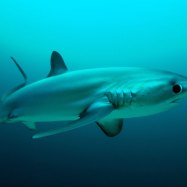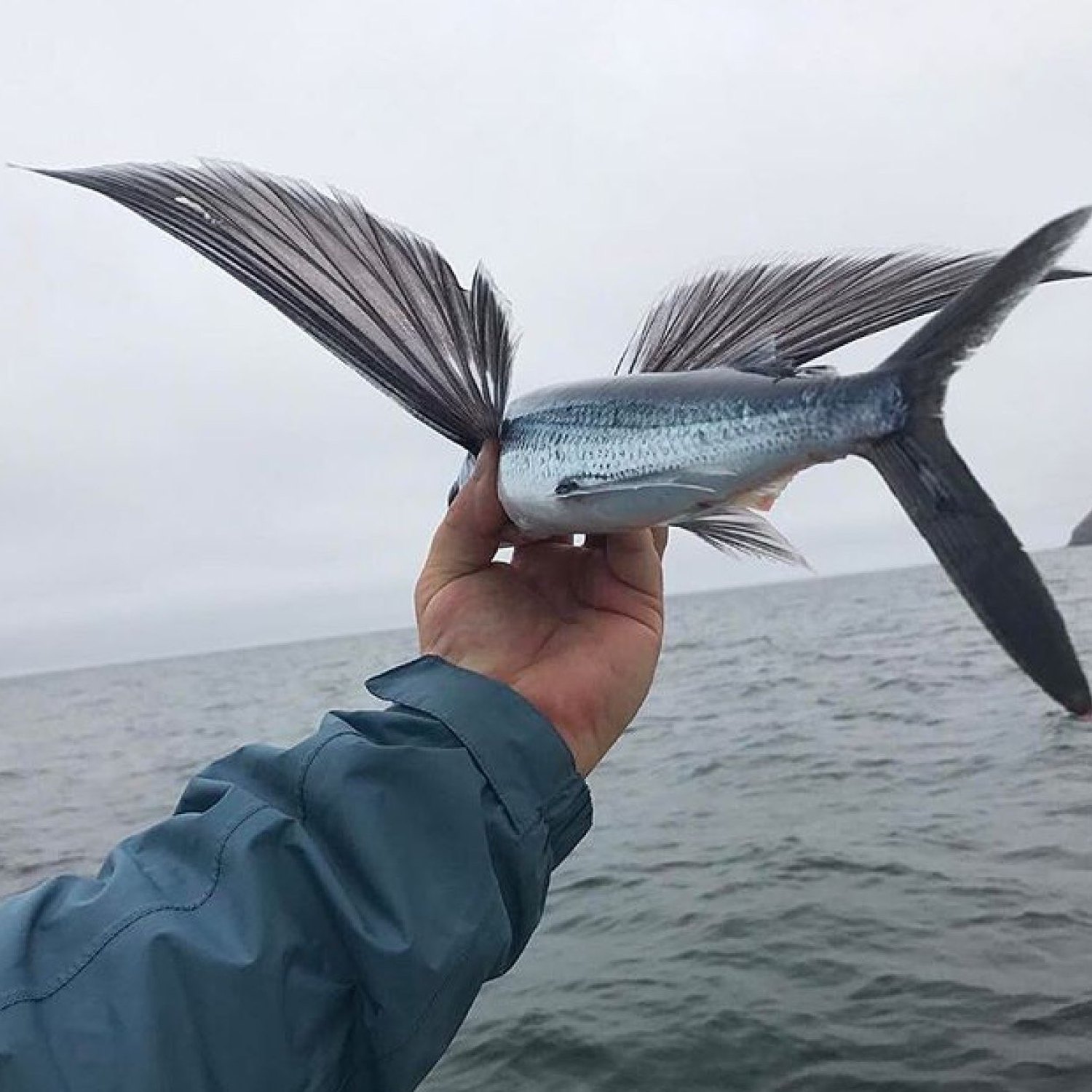
Flying Fish
10-30 cm (3.9-11.8 inches)
Flying Fish, also known as the gliding guppy, is a unique fish found in tropical and subtropical waters. With its streamlined and elongated body shape, it can reach a length of 10-30 cm (3.9-11.8 inches). This remarkable creature uses its large, wing-like fins to glide above the water's surface, making it a sight to behold in its natural habitat. Belonging to the Exocoetidae family, the Flying Fish is truly a marvel of the sea.
Animal Details Summary:
Common Name: Flying Fish
Kingdom: Animalia
Habitat: Marine
The Incredible Flying Fish: The Aquatic Wonder that Defies Gravity
When we think of flying animals, birds and insects are usually the first creatures that come to mind. But did you know that there is a fish that can also fly? Yes, you read that right – a fish that can soar through the air like a bird. This remarkable creature is called the Flying Fish.Scientifically known as Exocoetidae, the Flying Fish is a unique and fascinating creature that belongs to the Animalia kingdom, Chordata phylum, and Actinopterygii class Flying Fish. They are part of the Beloniformes order and the Exocoetidae family. These fish are found in the marine habitat and are carnivorous in nature.
Geographically, Flying Fish are primarily found in tropical and subtropical oceans around the world. However, they can also be found in various countries, making them a truly global species. They are mostly seen in tropical and subtropical waters, where the ocean can reach a temperature of 81 degrees Fahrenheit.
The Oceanic Adventurers
The Flying Fish are known for their incredible ability to glide above the water's surface. This unique behavior has fascinated humans for centuries and has led to many legends and myths. With their impressive skills in the air, they have earned the reputation of being the "oceanic adventurers."
Flying Fish have a streamlined and elongated body shape, which enables them to glide for long distances Frug. They are usually small in size, ranging from 10 to 30 cm (3.9 to 11.8 inches) in length. However, their size does not limit their speed, as they can reach maximum speeds of up to 70 km/h (43 mph) while gliding.
There are about 64 species of Flying Fish, and they come in various colors, including silver, blue, green, brown, and yellow. Their vibrant colors not only make them beautiful to look at but also help them blend in with the surrounding waters, making them less visible to predators.
A Marvel of Adaptation
The most intriguing aspect of Flying Fish is their ability to fly through the air. How is this possible for a fish, you may wonder? Well, the answer lies in their unique anatomy and behavior.
Their pectoral fins, which are located just behind their gills, are remarkably large and serve as their "wings." These fins are usually 50% to 66% of their body length and have a wing-like shape. When the fish is underwater, they act as normal fins, helping the fish to swim and maneuver through the water. However, when they take to the air, these fins are spread out, providing enough lift to keep them gliding above the water's surface.
In addition to their large pectoral fins, Flying Fish also have a unique ability to rotate their tail fins up to 90 degrees. This motion allows them to propel themselves out of the water, giving them the initial boost needed for flight. Once in the air, they use their pectoral fins to maintain their altitude and direction.
Their remarkable ability to glide is not just for show. It serves as an essential survival strategy for these fish. When faced with predators such as dolphins, tuna, and seabirds, Flying Fish use their gliding skills to escape danger. Not only do they cover long distances while gliding, but they can also change direction mid-flight, making it difficult for predators to catch them.
A Life at Sea
Flying Fish are incredible creatures, but their lives are not without challenges. These fish face threats from both natural and human causes. Habitat destruction and overfishing are two major human-induced threats to the Flying Fish population. As these creatures are an important food source for many marine animals, depletion of their population can have a cascading effect on the ocean's ecosystem.
Another major threat to Flying Fish is plastic pollution. Like many other marine animals, they often mistake plastic debris for food, and this can have fatal consequences. Plastic ingestion can cause internal injuries and even lead to death.
Fortunately, conservation efforts are being made to protect these incredible creatures. Some countries have implemented laws and regulations to control fishing practices and protect Flying Fish habitats. Awareness and education campaigns are also crucial in ensuring their survival.
The Future of Flying Fish
Despite the challenges they face, Flying Fish have some remarkable adaptions that have allowed them to thrive in their environment for millions of years. However, with the ever-increasing human impact on the oceans, their future may be uncertain. It is our responsibility to protect and preserve these creatures for future generations to enjoy.
As we continue to learn about the incredible feats of Flying Fish, scientists are also studying their unique abilities and using them as inspiration for the development of new technologies. Their efficient flight and glide motion have inspired designs for drones, underwater vehicles, and even flying cars. By studying these creatures, we may unlock secrets that can help us improve our own technologies and create a more sustainable future.
In conclusion, Flying Fish are an amazing and extraordinary species that continue to fascinate and captivate us with their incredible abilities. From their ability to glide above the water's surface to their vibrant colors and unique adaptations, these fish are truly one of a kind. As we continue to explore and learn about the oceans, we must also remember to protect and preserve the Flying Fish and all the other creatures that call it home. Who knows what other wonders and lessons we can learn from these amazing creatures?

Flying Fish
Animal Details Flying Fish - Scientific Name: Exocoetidae
- Category: Animals F
- Scientific Name: Exocoetidae
- Common Name: Flying Fish
- Kingdom: Animalia
- Phylum: Chordata
- Class: Actinopterygii
- Order: Beloniformes
- Family: Exocoetidae
- Habitat: Marine
- Feeding Method: Carnivorous
- Geographical Distribution: Tropical and subtropical oceans
- Country of Origin: Various countries
- Location: Tropical and subtropical waters
- Animal Coloration: Silver, blue, green, brown, and yellow
- Body Shape: Streamlined and elongated
- Length: 10-30 cm (3.9-11.8 inches)
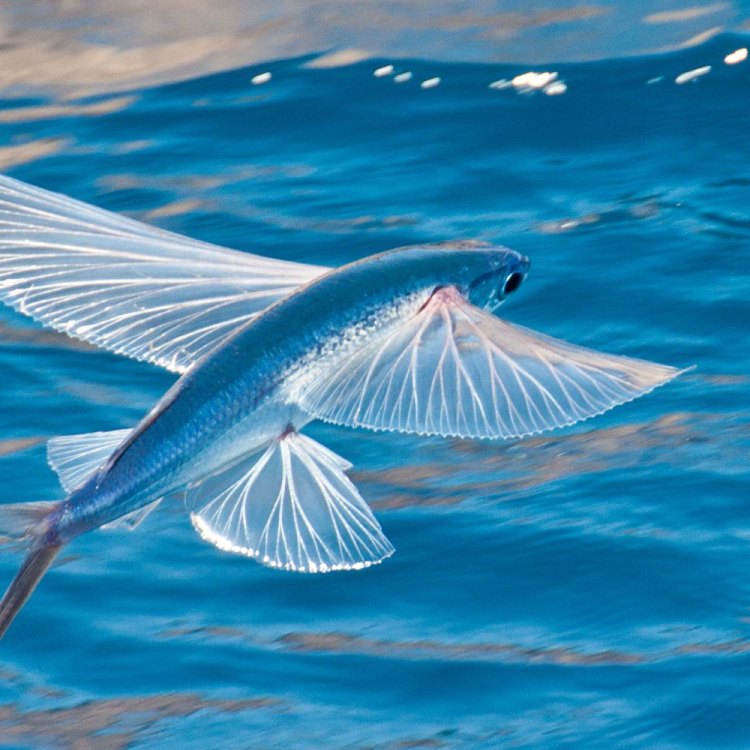
Flying Fish
- Adult Size: Up to 45 cm (17.7 inches)
- Average Lifespan: 4-5 years
- Reproduction: Egg-laying
- Reproductive Behavior: Males compete for females, females release eggs into the water
- Sound or Call: No
- Migration Pattern: Some species exhibit seasonal migrations
- Social Groups: Schools
- Behavior: They can glide in the air for long distances using their wing-like pectoral fins
- Threats: Predation, overfishing, habitat destruction
- Conservation Status: Not evaluated (IUCN)
- Impact on Ecosystem: They play a role in the food chain as both predator and prey
- Human Use: Commercial fishing, aquarium trade
- Distinctive Features: Wing-like pectoral fins, flattened body shape
- Interesting Facts: Flying fish can reach speeds of up to 60 km/h (37 mph) when gliding through the air
- Predator: Predators include birds, dolphins, and larger fish
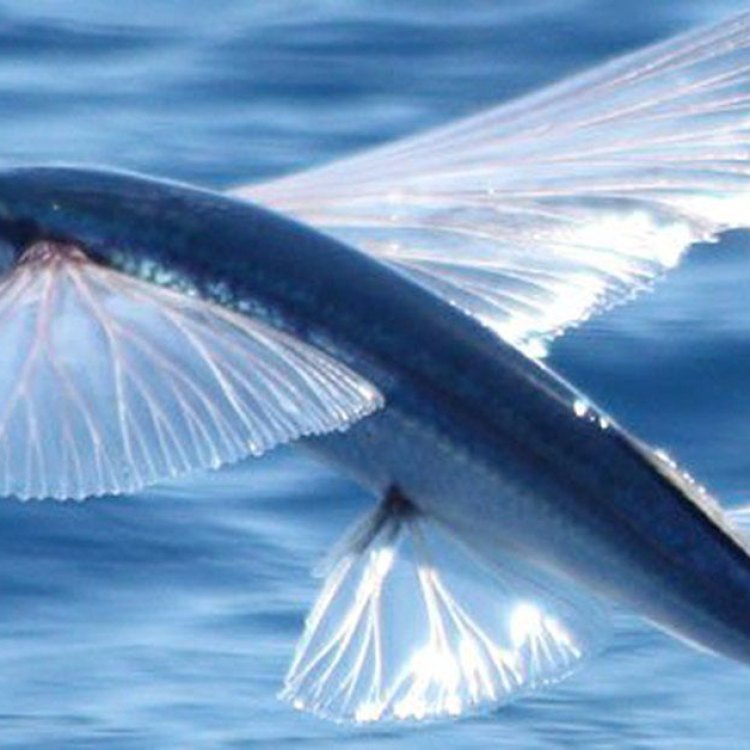
Exocoetidae
The Fascinating World of Flying Fish: A Marvel of Nature's Design
The ocean is a vast and mysterious world, filled with an abundance of fascinating creatures. Among these creatures is the flying fish, a unique species that has captured the curiosity of humans for centuries. With its ability to glide through the air, the flying fish is a marvel of nature's design. In this article, we will dive into the world of flying fish, exploring its distinctive features, behavior, and impact on the ecosystem PeaceOfAnimals.Com.The flying fish (Exocoetidae) is a group of marine fish with about 64 known species. These fish are found in tropical and subtropical waters all over the world, predominantly in the Atlantic, Pacific, and Indian Oceans. They are most commonly seen in tropical regions, but can also be found in temperate waters. The most commonly known species of flying fish is the Cheilopogon pinnatibarbatus, also known as the "common flying fish."
Adult flying fish can reach up to 45 cm (17.7 inches) in length, making them relatively small compared to other ocean-dwelling species. They have a flattened, streamlined body shape, which allows them to glide through the air with ease. The top of their body is a dark blue or green color, while the belly is silver or white.
The average lifespan of a flying fish is 4-5 years, depending on the species and their environment Furrow Bee. They have a unique reproductive behavior as they lay eggs rather than giving birth to live young. This type of reproduction is called oviparity and is common among many fish species.
During the breeding season, which varies among species, male flying fish compete for females by displaying vibrant colors and chasing after potential mates. Once a female has chosen her mate, she releases her eggs into the water, where they will hatch and continue their life cycle. This reproductive behavior is essential for maintaining a healthy population of flying fish.
Interestingly, flying fish do not produce any sounds or calls. They communicate primarily through visual cues and behavior, such as displays of aggressiveness or courtship. However, this lack of vocalization does not hinder their survival or reproduction.
One of the most remarkable and unique features of flying fish is their ability to glide in the air using their wing-like pectoral fins. These fins are located on the side of their body and can stretch out to resemble wings. When the fish is in danger or needs to escape a predator, it uses its powerful tail to launch itself out of the water and into the air. Once airborne, the fins act as wings, allowing the flying fish to glide for a significant distance before gracefully diving back into the water.
Their gliding technique is not only impressive but also practical. Since flying fish are surface-dwelling, this ability allows them to avoid predators in the water, such as larger fish. They can also use this technique to travel long distances without expending too much energy, searching for food or better habitats.
Some species of flying fish exhibit seasonal migrations, traveling thousands of miles to find suitable breeding grounds or warmer waters to survive in. These migrations not only benefit the flying fish but also have a significant impact on the ocean's ecosystem.
Flying fish play a vital role in the ocean's food chain as both predator and prey. They primarily feed on small plankton and other marine creatures, acting as important detritivores that keep the ocean's ecosystem in balance. They also serve as a food source for larger ocean creatures such as birds, dolphins, and other fish, playing a crucial role in maintaining the biodiversity of the ocean.
Sadly, like many other marine species, flying fish face various threats that put their survival at risk. One of the most significant threats they face is predation. As mentioned earlier, flying fish are preyed upon by a variety of ocean-dwelling creatures. Birds, such as frigatebirds, are known to hunt flying fish as they glide above the water's surface. Dolphins, larger fish, and even humans also pose a threat to flying fish.
Overfishing is another significant threat to the survival of flying fish. They are often caught as bycatch, unintentionally caught in fishing gear meant for other species. In some parts of the world, flying fish are also directly targeted for commercial fishing, particularly in Asia, where they are considered a delicacy. This overfishing can lead to a decline in their population and disrupt the ocean's delicate balance.
Habitat destruction is also a considerable threat to flying fish. Due to human activities such as pollution and coastal development, the ocean's health is degrading, affecting the habitats of many marine creatures, including flying fish. As these fish rely on shallow waters, any alteration to their habitat can pose a significant risk to their survival.
Despite these threats, flying fish have not yet been evaluated for their conservation status by the International Union for Conservation of Nature (IUCN). However, it is clear that these extraordinary creatures need our attention and protection to ensure their continued existence.
Aside from their ecological significance, flying fish also have cultural and economic importance. In some regions, they are a staple food source for local communities, providing a source of income through commercial fishing and the aquarium trade. Due to their unique characteristics, flying fish are also popular in aquaculture and serve as a source of entertainment for tourists in aquariums.
In conclusion, flying fish are truly a marvel of nature's design. With their distinctive features, impressive gliding ability, and essential role in the ocean's ecosystem, these fish have captured the attention and curiosity of humans for centuries. However, as with many marine species, flying fish face threats that put their survival at risk. As stewards of the ocean, it is our responsibility to protect and preserve these fascinating creatures for generations to come. Let us admire, respect and value the marvelous flying fish, and ensure their continued existence in our oceans.
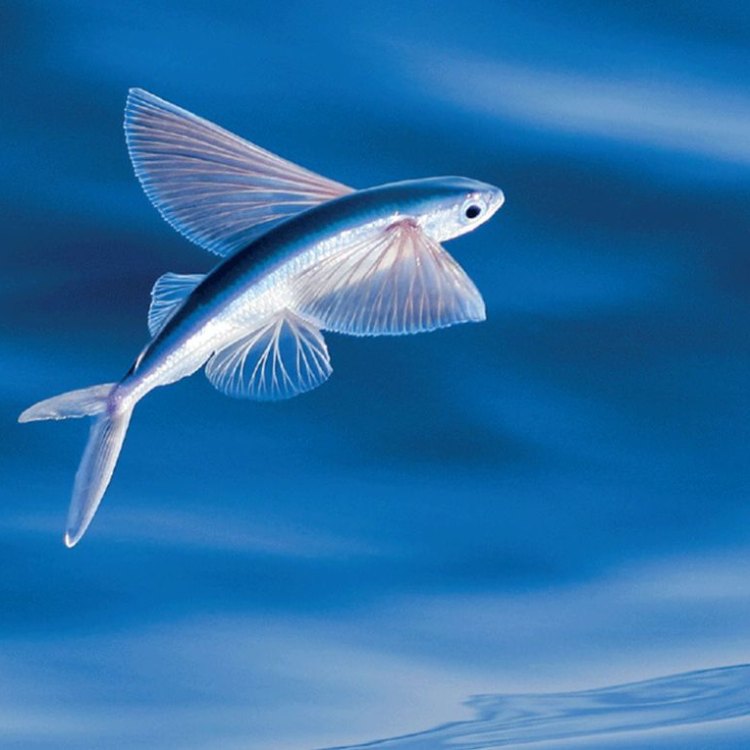
The Incredible Flying Fish: The Aquatic Wonder that Defies Gravity
Disclaimer: The content provided is for informational purposes only. We cannot guarantee the accuracy of the information on this page 100%. All information provided here may change without prior notice.

